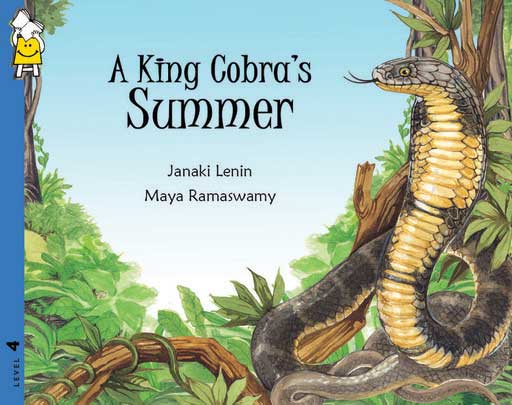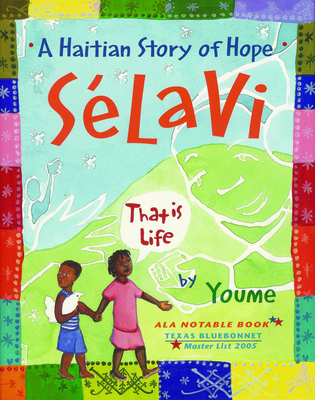There is always this fine balance as parents to encourage what we think is healthy and positive while gently steering our children away from what we believe is undesirable.
While the younger child doesn't care much for "spooky stuff" unless it is funny, the older one cannot have enough of it, the darker the better. The younger one is excited about poetry (the rhyming kind) while the older could take it or leave, as long as it is a good read (by her definition, of course).
So, when we decided to explore a theme for October, it seemed like poetry books that celebrate the creepy while balancing it out with humor, was a natural choice.
Of course, it was unavoidable to run into "Hallowe'en" along the way - there are very few children's picture books about the menacing macabre theme without the implicit association with All Hallow's Eve.
As usual, we raided the local library and found what we could and read the books one after the other, in no particular order. Some of the books below are for 8+ while others might be just fine of the 5/6 year olds. As always, it is left to the parent and the child to pick and choose the ones that might be of interest.
1. Your Skeleton is Showing: Rhymes of Blunder from Six Feet Under
by Kurt Cyrus

illustrated by
Crab Scrambly
Hot off the press, so-to-speak, this book of poems is both bizarre and funny.
Poet Laureate Kenn Nesbitt's October 2013 pick seems to appeal to the young and not-so-young alike.
A young boy wanders into a graveyard and encounters a lost dog - well, ghost of a lost dog who is looking for its (ghost) owner. As they wind their way through the graveyard, they 'meet' various other 'inhabitants' and learn a bit about how they each met their macabre fate. In the end, the boy finds what he was looking for as does the dog.
Freddie Diggs who would not stop picking his nose; Wanda Gripp who loved to hug everyone and didn't think twice about hugging an anaconda; High-wire Pete who couldn't tie a knot; we learn about them via hilarious poetry- about how they fell, or what they are up to in their afterlife.
Kurt Cyrus is not stranger in our house - quite a few of his books (written & illustrated!) are all-time favorites earning a firm spot on our bookshelf. While I am curious to know why Kurt didn't illustrate this book, or had he chosen to illustrate it how different would it be, I am very glad to see Crab Scrambly's presentation of the grisly mixed with the amusing.
 2. Los Gatos Black on Halloween
2. Los Gatos Black on Halloween
by Marisa Montes
illustrated by Yuyi Morales
This bilingual poetry book has just enough spooky Spanish words to complete the reading experience. From context and the illustrations, we can glean the meaning easily even if the Spanish words are unfamiliar at first.
Under the bright full luna, a host of creatures go about: los gatos black emerge; las bruhas fly on their broomstick; los fantasmas rattle their chains and shriek their pains; los esqueletos rattle their bones and clatter in a dance; los muertos rise from the graves and join the others at the haunted casa for some music and dance on their one night of celebration.
However, the party stops when they hear a knock on the puerta. What disturbs them the most is los niños yelling "trick-or-treat"!
While the illustrations are rather darkish and mildly eerie, the humor in them counterbalances and adds a certain charm that complements the reading experience.
What a fun way to incorporate a second language into the reading experience!
3. Creature Carnival

by Marilyn Singer
illustrated by Gris Grimly
I have tremendous admiration for Marilyn Singer's poetry.
Mirror, Mirror and its follow-up book
Follow, Follow present Reverso poems that she pioneered.
From the inspiring collection of poems about nature in
Footprints on the Roof and its companions
How to Cross a Pond and
Central Heating, to child-friendly non-fiction presentations like
Bottoms Up! and
Eggs, many of Ms.Singer's books have resonated with me as a parent.
What's not to like about creatures from myth, legend, and popular culture? From Godzilla to Dragons, a menagerie of animals are presented via clever and witty poems, possibly appealing to the older children and adults. The illustrations by Gris Grimly match the poems in wit and humor while highlighting the eerie and the gruesome.
4. Skeleton Bones & Goblin Groans
Poems for Halloween
by Amy E. Sklansky

I fell in love with
Amy Sklansky's
Out of this World poetry book about space.
This book is a collection of rather tame poems for the young, not too scary, and not too funny either, and all about Halloween as the subtitle says.
Some are perfect for the 5 year old to enjoy - like the one about
Jack O'lantern and the one about what costume to wear for trick-or-treating.
I fell in love with the artwork in this book: beads and fabric!
 5. Two Skeletons on the Telephone
and Other Poems from Tough City
5. Two Skeletons on the Telephone
and Other Poems from Tough City
by Paul Duggan
illustrated by
Daniel Sylvestre
Murphy the Rat immediately caught the attention of the 8 year old - the tough rat who calls out, "Here kitty, kitty" itching for a fight.
Murphy's Favorite Sayings is a short 4-liner that again reiterates Murphy's obsession with cats:
Murphy has a few sayings he loves to use,
Like "a stitch in time" or "tit for tat."
But the one that really expresses his view?
"There's more than one way to skin a cat."
Many of the poems are humorous and silly enough even if not laugh out loud funny. None of them are scary or gross, even if they might appeal better to an 8+ year old better.
Two skeletons on the telephone-
Yackety-yack all day.
Just a pair of empty heads
With nothing much to say.
[
Read the poem]
 6. You Read to Me, I'll Read to You
6. You Read to Me, I'll Read to You
Very Short Scary Tales to Read Together
By Hoberman, Mary Ann
Another wonderful book from the
You Read To Me, I'll Read To You series, this is a collection of poems that two can read aloud taking turns, alternating the color-coded lines/verses. For example,
I'm a witch
A wicked witch
My hat and cape
Are black as pitch.
I'm the broomstick
That she flies on.
I'm the broomstick
She relies on.
None of the poems are scary - the two-voiced poems are quite easy to read and fun to take turns and "act it out". The illustrations have a cartoonish charm while supplementing the reading experience.
[
BookBrowse at Hatchett Book Group]
 7. See My Lovely Poison Ivy
7. See My Lovely Poison Ivy
And Other Verses about Witches, Ghosts, and Things
by Lilian Moore
illustrated by Diane Dawson Hearn
The
VSS Illustrator Interview features the wonderful Diane who illustrated this poetry collection by
Lilian Moore (1909-2004).
Sometimes creepy just for the way it conjures up images in our head, as
Laura Purdy Salas shares, the poems are nevertheless ageless and timeless, and possibly appeal to 8+ age group.
Witches appear prominently, along with other creatures. The poems are clever and are presented from fresh and unique perspectives.
I Left My Head reminded us of Shel Silvestein's
The Loser in
Where the Sidewalk Ends.
Lost and Found was another interesting one where Lost: part announces the wizard's pet gone missing, please feed daily (p.s: Reward) and the Found: part announces a dragon breathing fire and eating 20 large meals a day, please come and get him (p.s: No reward needed.)
[image source:
Visual Storyteller's Studio illustrator interview]
 8. Halloween Hoots and Howls
8. Halloween Hoots and Howls
by Joan Horton
illustrated by
Joann Adinolfi
This is a delightful collection of poems. Some of them are quite silly and child-friendly and the 5 year old loved them.
Like the one about the pumpkin which starts,
"Woe is me," the pumpkin said / "They plucked me from my garden bed"
and goes on to describe the pumpkin getting its innards scooped out and then carved and then placed in a strategic spot which is infested with foul ghouls and ghosts, and in the end becomes a pumpkin pie, ending with,
"They later baked me in a pie / And now they're eating me - Goodbye!"
And then there are a few that are quite perturbing and I skipped reading them to the younger child knowing his sensitivities. Like, the vampire poem which is short yet eerie:
"One waking vampire rising from his tomb / One thirsty vampire stalking through the gloom
...
While you're fast asleep at night / He's searching for your room."
Of course, the 8 year old found all of them funny and silly - especially the gravestone ones like,
"Beneath the sea lies Captain Blank / A pirate made him walk the plank / He sank."
The illustrations are beautiful and amusing, not at all grim and dark.
 9. The Gargoyle on the Roof
9. The Gargoyle on the Roof
by Jack Prelutsky
illustrated by Peter Sis
Gargoyle, griffin, gremlin...
Werewolf, troll, basilisk...
Jack Prelutsky's brilliant style along with Peter Sis' quite terrifying illustrations made this perfect for the 8 year old. The humor does not come across easily and can be quite grim if taken literally sometimes.
Also, even some of the simpler references are probably more suited for older kids... like, the lonely troll who says he has brought his telephone so feel free to call him, especially since it is a "troll-free number" - the 8-yr old has no idea what a "toll-free number is" (possibly because I've not explained it to her yet and she has not had a need to know it), so the play on it is lost at first read.
Or, when the mother gargoyle sings her lullaby, "
Dream your lovely daymares/ Where terror is delight" - if taken literally, it can get rather disturbing, but in the light of the whole poem where the mother tucks her babies in just as the sun comes up, when they'll all sleep like stones, it brings in a weird sort of smile to the reader just picturing this strange tenderness.
 10. Witch Watch
10. Witch Watch
by Paul Coltman
illustrated by Gillian McClure
Definitely more for the 9+ range, the entire book is a long poem that tells the story of a Cockney boy who is caught spying on his neighbor (witch) by hiding in a ditch, and is forced to do many chores.
The tough part was the accent - hard to read to translate to "understandable" English at times, but, all the more fun, as the older child has a fascination for the subtle differences in English accents (thanks to Doctor Who), along with a strong liking for all things Irish, Scottish, and Welsh.
Not exactly a fun read-aloud book, this is one of the tougher books in this pile here. The pictures are quite bizarre and filled with nuances that can be unsettling if the child is not ready for it.
Bonus:
11. By the Light of the Halloween Moon

by Caroline Stutson
illustrated by Kevin Hawkes
An all-time favorite, this book is a cumulative rhyming tale about a girl who is sought after by various unpleasant creatures, and how she stands up to them.
While not a collection of poems, the jaunty lilt in the text makes it a fun read-aloud book.
[
Read More]
[image source (unless otherwise specified above): multcolib.org]
 The Adventures of Odysseus
The Adventures of Odysseus













.png)









